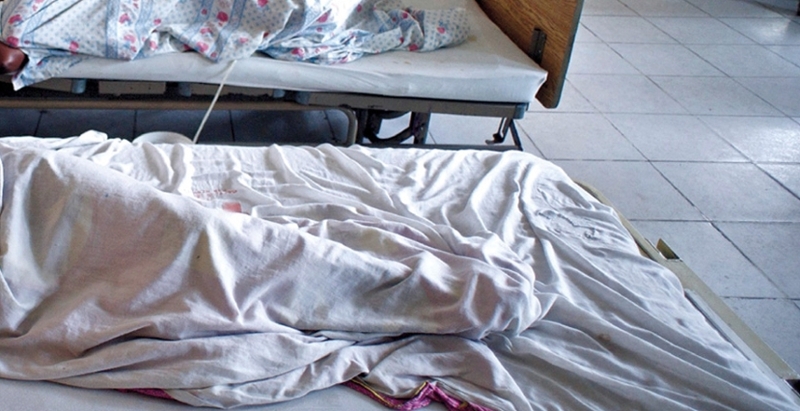Focus on Obstetric fistula: A consequence of child early and forced marriage

Mary Ndu
Ph.D. Candidate: Health and Rehabilitation Sciences (Health Promotion)
May 27, 2022
According to Medical Encyclopedia, a fistula is “an abnormal connection between two body parts, such as an organ or blood vessel and another structure.” They can occur in any part of the body because of an injury, surgery, infection, or inflammation. Certain conditions such as Crohn’s disease, tuberculosis, cancer, Ulcerative Colitis, and sexually transmitted diseases are also associated with fistula. This blog will focus on a particular life-threatening fistula common to adolescent mothers: obstetric fistula. Obstetric fistula is usually associated with child early and forced marriage, and represents a wicked health challenge.
An obstetric fistula is an abnormal opening between the birth canal, urethra, or rectum produced during childbirth. This condition mainly affects adolescent mothers whose bodies are not ready for childbirth because of the pressure from the baby’s head pushing on the birth canal. Obstetric fistula occurs because of a hole in the birth canal from long obstructed labour, often associated with a woman’s failure to seek timely quality obstetric care, leaving women to leak urine and feces. The condition is so devasting that women affected live with physical disabilities and significant social consequences: ostracised by society, isolated and abandoned by loved ones (Kasamba et al., 2013). Unfortunately, communities often attribute obstetric fistula to infidelity and sexually transmitted infection, leaving the women with severe psychological trauma and socioeconomic burden (Ahmed & Holtz, 2007). On this International Day to End Obstetric Fistula, it is imperative to focus on a highly stigmatized condition and the need for recommitment to ending child marriage—a gender issue enshrined in sociocultural norms and a direct contributor to obstetric fistula.
Child early and forced marriage is a global human rights issue entrenched in religious and sociocultural beliefs. In the last few years, there has been an increased call on governments to revisit the legal age of marriage and criminalize child early and forced marriage. It has been slow progress, but we have seen countries like Gambia and Chad criminalizing the practice, and recently, the United Kingdom became the latest country to achieve this and criminalize child marriage. However, this is still an issue in many countries, especially in countries with strong religious and cultural beliefs. Often, there is an increase in the practice because of economic tensions, especially where there is a humanitarian crisis, i.e. Afghanistan. In 2021, CNN reported a story of a nine-year-old girl, Pawana, sold in marriage to a 55-year-old man for an equivalent of $2000 because the family was poor. I also remember the story of Aisha (not real name) from my home country of Nigeria, a fourteen-year-old girl married to Ibrahim (not real name), a sixteen-year-old mechanic. Aisha developed a fistula after her first pregnancy and had lived with the condition for one year, passing urine and feces before I met her. I met Aisha through a social worker and, with the collaboration with colleagues, was able to get a surgeon to repair her fistula tear. Aisha’s story is one of the many success stories of young mothers who were fortunate to receive medical assistance to repair their fistula tears.
According to UNFPA and WHO, obstetric fistula affects over two million women globally, with an estimated 50,000 to 100,000 women affected annually. This is one of the leading causes of unborn deaths resulting in 90% of stillbirth cases globally. The WHO factsheet on fistula states that fistula is preventable if adolescents delay marriage. Sadly, this is not the reality for many girls living in countries where obstetric fistula ranks as one of the major causes of maternal mortality. An estimated 37,000 girls globally marry each day, becoming first-time mothers before their 15th birthday. With poor access to quality health care services, many of these girls will experience destructive deliveries, leading to obstetric fistula (Kasamba et al., 2013).
Obstetric fistula can be prevented if only girls are allowed to mature physically and decide whether they want to get married and have children. The most painful thing about obstetric fistula and child marriage is how easily women have become objectified and commodified, depriving them of the fundamental human right of choice. Watching Pawana, the 9-year-old, sold to delay her family’s inevitable drop into poverty was heartbreaking. Historically, treating women as commodities in some contexts, deprived of the choice to decide what happens to their bodies, is not new. In many countries, especially those with strong religious and cultural norms, having a girl is a burden, and a waste of financial resources (Sivak & Smirnov, 2019). It seems that such societies have socialized themselves to hold a stereotypical view of girls and their potential. We can continue to excuse the practice as one driven by poverty, but I opine that poverty is not the reason for these practices. Only in understanding the underlying reasons and not making assumptions based on unintended circumstances such as a crisis can we begin to truly address the persistent scourge of child marriage and its consequence, obstetric fistula.
References
Ahmed, S., & Holtz, S. A. (2007) Social and economic consequences of obstetric fistula: life changed forever? Int J Gynaecol Obstet. 99(Suppl 1):10–5.
Kasamba, N., Kaye, D. K., & Mbalinda, S. N. (2013). Community awareness about risk factors, presentation and prevention and obstetric fistula in Nabitovu village, Iganga district, Uganda. BMC pregnancy and childbirth, 13(1), 1-10.
Sivak, E., & Smirnov, I. (2019). Parents mention sons more often than daughters on social media. Proceedings of the National Academy of Sciences, 116(6), 2039-2041.
WHO (2018) Obstetric Fistula. https://www.who.int/news-room/facts-in-pictures/detail/10-facts-on-obstetric-fistula#:~:text=Each%20year%20between%2050%20000,of%20maternal%20mortality%3A%20obstructed%20labour.
